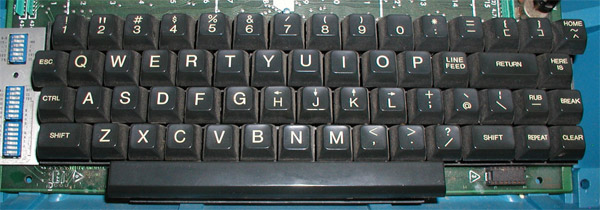vim
Updated in february 2019.
Introduction
Vim is my text editor of choice. When I have to type some text outside of Vim I feel like I’m working at 10% capacity and miss a lot of the features it offers (like deleting a line with dd).
This post aims to explain my vim config and all the nice things I added over the years. If you use vim, you might want to keep reading ;)
The config folder
All the vim related files are in ~/.vim, even the vimrc file, it doesn’t need to be in $HOME.
The plugin manager
I chose Vundle. In my .dotfiles repository it is cloned as a submodule in ~/.vim/bundle.
# file: ~/.vim/vimrc
" set the runtime path to include Vundle and initialize
set rtp+=~/.vim/bundle/Vundle.vim
call vundle#begin("~/.vim/plugins")
" let Vundle manage Vundle, required
Plugin 'gmarik/Vundle.vim'
" fold functions with space
Plugin 'tmhedberg/SimpylFold'
" check syntax of code
Plugin 'vim-syntastic/syntastic'
" show trailing whitespaces in red
Plugin 'ntpeters/vim-better-whitespace'
" go integration
Plugin 'fatih/vim-go'
" autocomplete when writing code
Plugin 'Valloric/YouCompleteMe'
" open file in new vim tab/buffer with fuzzy search
Plugin 'ctrlpvim/ctrlp.vim'
" show the git diff status of the line on the left of the file in real time
Plugin 'airblade/vim-gitgutter'
" All of your Plugins must be added before the following line
call vundle#end() " required
filetype plugin indent on " required
After a fresh install, open vim and type :PluginInstall. Then follow the instructions to finish installing YCM.
Use Tab not Escape
Let’s talk about something important: when Vim was created the keyboard looked like this:

As you can see, there are arrows on the HJKL keys, and more importantly, the ESC key was where we find Tab today. So it makes a lot of sense to remap the key to switch modes from Esc to Tab because it’s much more accessible!
If you’ve been using Vim without this change, well, that sucks. Esc is way too far!
Corresponding config in ~/.vim/vimrc:
" Tab is Esc, and Shift Tab is Tab
inoremap <Tab> <Esc>
inoremap <S-Tab> <Tab>
vnoremap <Tab> <Esc>
vnoremap <S-Tab> <Tab>
Tabs navigation
I like tabs in vim. The key is not to have too many of them. But because it’s very easy to reopen a tab with CtrlP, I close them often.
Here is the config for using Ctrl-n and Ctrl-p for respectively next and previous tabs.
" tab navigation Ctrl-n for next, Ctrl-p for previous
nmap <silent> <C-n> :tabnext<CR>
nmap <silent> <C-p> :tabprev<CR>
imap <silent> <C-n> <esc><C-n>
imap <silent> <C-p> <esc><C-p>
Also, I’ve shortened the name of the tabnew command:
" :tn for tabnew
ca tn tabnew
CtrlP config
" use Ctrl-c to open CtrlP
let g:ctrlp_map = '<c-c>'
let g:ctrlp_cmd = 'CtrlP'
let g:ctrlp_user_command = ['.git', 'cd %s && git ls-files -co --exclude-standard']
" open in a new tab
let g:ctrlp_prompt_mappings = {
\ 'AcceptSelection("e")': [],
\ 'AcceptSelection("t")': ['<cr>', '<c-m>'],
\ }
Better whitespace config
" configure better whitespace plugin to allow markdown
let g:better_whitespace_filetypes_blacklist=['diff', 'gitcommit', 'unite', 'qf', 'help']
YCM config
I find Ctrl-t quite nice to go down the list of autocompletion.
" fix the Tab key being used
" use C-t and C-s to go through the list
" disable ctrl-t
map <C-t> <Nop>
" disable ctrl-s
map <C-s> <Nop>
let g:ycm_key_list_select_completion = ['<C-t>']
let g:ycm_key_list_previous_completion = ['<C-s>']
Folds setup
" FOLDS
set foldenable
set foldmethod=indent
set foldlevel=99
" save/restore foldings
autocmd BufWinLeave *.* mkview
autocmd BufWinEnter *.* silent loadview
" get space to show/hide folds
nnoremap <Space> za
" show python docstring in the fold
let g:SimpylFold_docstring_preview = 1
Misc
" :v for vsplit
ca v vsplit
" Enable mouse
set mouse=a
" utf8 ftw
set encoding=utf-8
" Case insensitive search
set ignorecase
" search is case sensitive only if you put a CAPITAL
set smartcase
" keep history
set undofile
set undodir=~/.vim/undodir
" remove the Ex mode (also known as pain in the ass mode)
nnoremap Q <nop>
" Create backup files
set backup
set writebackup
set backupdir=~/.vim/backup
set directory=~/.vim/backup
" fix the backspace problem
set backspace=indent,eol,start
set history=50 " keep 50 lines of command line history
set ruler " show the cursor position all the time
set showcmd " display incomplete commands
set incsearch " do incremental searching
Remapping of basic keys
I use the bépo keymapping (and you should too if you’re french!), so there is a need to remap some of the keys. This is probably the oldest part of my vim config as I started typing in bépo before using vim!
From the bépo.fr wiki page on Vim: https://bepo.fr/wiki/Vim
" [HJKL] -> {CTSR}
" ————————————————
noremap c h
noremap r l
" {ts} = « haut / bas »
noremap t j
noremap s k
" {CR} = « haut / bas de l'écran »
noremap C H
noremap R L
" {TS} = « joindre / aide »
noremap T J
noremap S K
" Corollaire : repli suivant / précédent
noremap zs zj
noremap zt zk
" {HJKL} <- [CTSR]
" ————————————————
" {J} = « Jusqu'à » (j = suivant, J = précédant)
noremap j t
noremap J T
" {L} = « Change » (h = bloc, H = jusqu'à la fin de ligne)
noremap l c
noremap L C
" {H} = « Remplace » (l = caractère, L = texte)
noremap h r
noremap H R
" {K} = « Substitue » (k = caractère, K = ligne)
noremap k s
noremap K S
" Désambiguation de {g}
" —————————————————————
" ligne écran précédente / suivante (à l'intérieur d'une phrase)
noremap gs gk
noremap gt gj
" onglet précédant / suivant
noremap gb gT
noremap gé gt
" optionnel : {gB} / {gÉ} pour aller au premier / dernier onglet
noremap gB :exe "silent! tabfirst"<CR>
noremap gÉ :exe "silent! tablast"<CR>
" optionnel : {g"} pour aller au début de la ligne écran
noremap g" g0